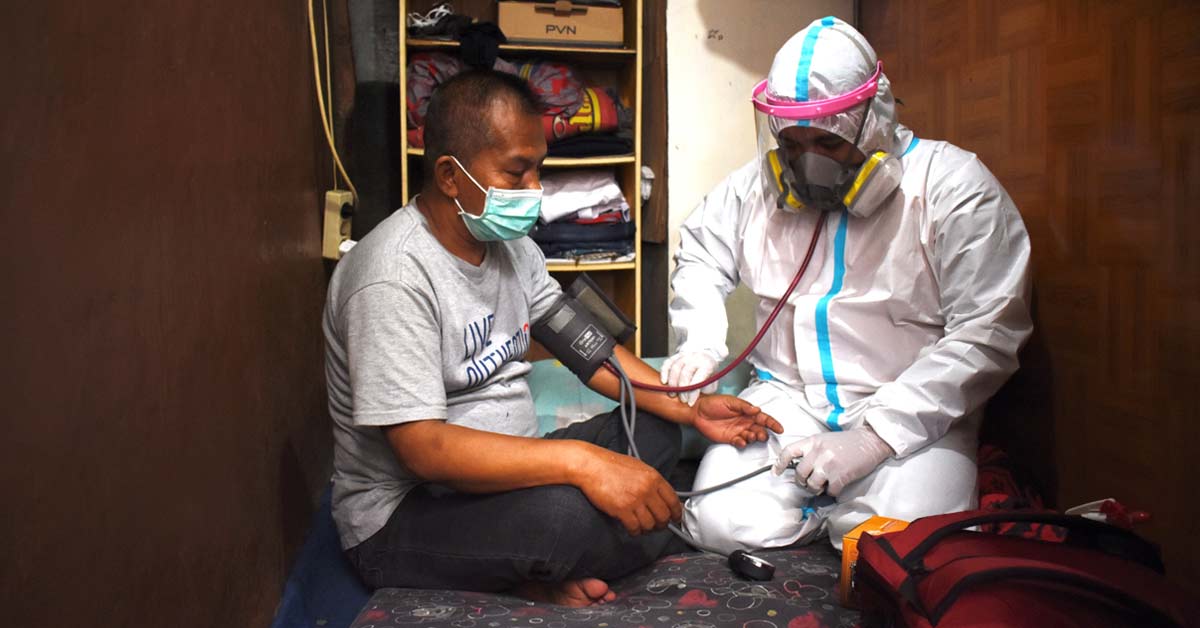The United Kingdom’s (UK) pledge to scrap legally enforced isolation for people in England with COVID-19 flies in the face of basic infectious disease management, which tells us to avoid infecting other people when you are infectious.
It is a basic public health protection, like others we have in daily life: speed limits on roads, the banning of smoking indoors, and laws against drink driving. These limit our freedoms to a certain extent, but we have accepted that “infringement” in order to have a safer and healthier society.
While we need to get back to “normality”, it’s a question of timing, and now isn’t the right time.
Governments across the world are facing the same difficult questions with COVID-19. While vaccines and therapeutics have largely defanged COVID-19, the disease can still have a nasty bite, especially for those who are unvaccinated or vulnerable or elderly. Even for those with three vaccines who manage the disease at home, Omicron can leave people with fatigue, struggling with their normal activities and needing weeks to recover.
At the same time, suppression has become increasingly difficult and elimination almost impossible, given Omicron’s infectiousness: South Korea has abandoned its test-and-trace system due to the difficulty of tracking chains of infection that were moving faster than their world-leading tracing systems could run.
Asking people to continue to limit their social mixing, work from home and avoid activities they might enjoy such as singing in church or going to the pub once a week is increasingly difficult for governments. Humans are social – interacting and being in close physical contact is part of a meaningful life for many people.
Governments are also dealing with the longer-term build-up of harms that come with extensive restrictions, such as rising unemployment, mental health issues (in younger people particularly), increased educational inequalities and the desertion of city centres.
We all want our pre-COVID-19 lives back: the question is what the cost of this is. That’s the debate we should be having as a society, without avoiding the difficult realities of the situation. The UK has faced an average of 200 deaths a day now for weeks, while the United States (US) is heading towards the million-death mark.
The media no longer report these deaths widely, as they did at the start of the pandemic: there seems to be a certain acceptance of this as the cost of somewhat normal life to continue. The morality of that is questionable.
It is similar to how other diseases such as measles, malaria and childhood pneumonia have been approached. In 2018, measles killed more than 140,000 people worldwide, largely children under five. These deaths could have been prevented through vaccination.
In 2018, malaria killed more than 411,000 people, most of them babies and toddlers. These deaths could have been largely prevented through antimalarial treatment. In 2018, more than 800,000 children, largely under five, died of pneumonia, making it the biggest infectious killer. These could have been largely prevented through provision of oxygen and antibiotics.
We know how to prevent the bulk of child deaths across the world, we just don’t have the political will or investment to make it happen.
The difference in attention to COVID-19 deaths is that this is killing people in rich countries, not just in poor ones. And again, we know how to prevent the bulk of COVID-19 deaths using vaccinations and boosters, rolling out new antiviral therapies and continuing to ensure that testing is available to enable those who are infectious to isolate and avoid infecting those who could be at risk of serious disease.
Uncertain Future
Isolation could possibly be removed at some point in the future, starting with children, but we need to move cautiously with an uncertain future. It’s easy to forget that we are still learning and making policy in real time with considerable uncertainty over the coming months.
There are three major unknowns that worry scientists as we look ahead into the future. The first is about waning immunity and how long protection from vaccines or infection will last, especially for those more susceptible to severe illness from COVID-19.
Again, this is science in real time: we will know about waning immunity when patients start appearing in hospitals and we can collect enough data from enough people on their vaccination date and status and health outcomes. Learning from other countries is vital here.
Next is the question of long-term impacts of the virus on the body: a new study from the US shows that even a mild bout of COVID-19 increased the risk of heart failure by 72 percent and of stroke by 52 percent for at least a year after diagnosis.
We still don’t fully understand what the impacts of getting COVID-19 are on the heart, lungs, blood vessels or brain, once or repeatedly. This means that resigning people to get COVID-19 several times could possibly have major consequences in the years to come.
The third is about what new variants might emerge and how that might affect the next phase of the pandemic. New variants may not necessarily be milder: there is a certain unpredictability about what might come next.
Managing COVID-19 is not an easy feat, and it is fantastic that restrictions have largely been released for us to continue with normal life. Children particularly should be able to mix with their friends and enjoy as much normality as possible. But releasing isolation right now, given the uncertainty ahead and the death toll, is irresponsible.
If we’ve learned anything from the past two months, slow and steady is the best way to stay ahead of COVID-19.
